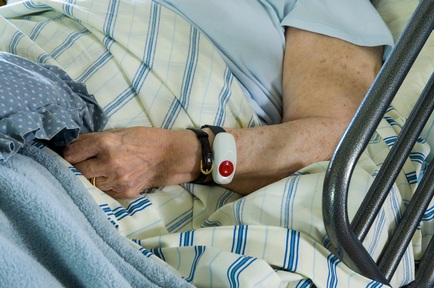Care England hits back at 'financial engineering' claim made against care home owners
Putting more Government money into the care home system is no solution because care chain owners are adept at taking money out, argue academics who drew criticism from Care England's boss for a failure to ‘understand the true costs of care.’
 Large care home chains are rife with dubious financial engineering, tax avoidance and complicated business models designed to push risks and costs from care home owners on to staff, the state and private payers, according to a report by the Centre for Research on Socio-Cultural Change (CRESC).
Large care home chains are rife with dubious financial engineering, tax avoidance and complicated business models designed to push risks and costs from care home owners on to staff, the state and private payers, according to a report by the Centre for Research on Socio-Cultural Change (CRESC).
'Trade Narrative'
The report ‘Where does the money go? Financialised chains and the crisis in residential care’, says the big care chains tell a ‘trade narrative’ which broadsheet newspapers and Radio 4’s Today programme have fallen victim to; a tale of ‘an urgent crisis in social care which is the result of not enough money from local authorities for publicly funded beds.’
Researchers say ‘In our view, this narrative oversimplifies the story: the issue is not simply how much money goes into adult care but where the money goes.’
The report said big care home chains are trying to persuade the Government to pay a higher price which will protect them from the ‘losses that are an ordinary risk of capitalist business’.
In response the chief executive of Care England, Martin Green said: “I'm very surprised that ‘academics’ do not seem to understand that it is not about bailing the care home sector out, but it is about paying the true cost of care for publicly funded clients.
“I'd be interested to know if these academics understand the true costs of care? In Sheffield, the local authority funds the care of older people in residential homes at £2.31 an hour. How is this sustainable in any context?"
'Chains are partly the authors of their own misfortunes'
The report stated: 'The financialised chains are partly the authors of their own misfortunes and are passing on social costs because of an underlying problem: the techniques of debt-based financial engineering were originally developed for high return and high risk activities, but are here being applied inappropriately to a capital intensive, welfare activity, like care homes, whose characteristics should make it low return and low risk.
'The large care home chains are adept at taking money out (cash extraction) and prone to recurrent crisis because the chains are bought and sold frequently often using debt leveraged buyouts which means sale prices are inflated and the chains are loaded with ever more debt until the cash flow cannot cover the financing cost.
'Chain owners are attracted by steady (part tax payer-funded) revenue streams where they can maximise upside gains and manoeuvre around the downside financial risk of losing their money'; their business model privileges cash for equity over and above the interests of tax payers and care workers.'
Complex structures claim
In response Martin Green said: "In relation, the complexity of the financial structures of these organisations, I am not clear what complexity they are talking about. These companies work within the framework of the law in the UK, and their company structures are not unlike any other companies.
“I could argue that some of the structures in the NHS and the education sector are also quite complicated, even though they survive on huge amounts of government funding, which is just delivered to the bank account of the public sector body, and which is sometimes not accounted for properly. I cite several Health Select Committee and Public Accounts Committee reports as evidence of this assertion.
“I'm also interested in the number of NHS trusts and universities who overspend their allocations. In private sector bodies, this would lead to a cash flow-induced bankruptcy, but public sector bodies are usually ‘bailed out’ by Government.
"Of course if you go bankrupt in the private sector, you become a registered bankrupt and lose everything. Staff in the public sector are often given payoffs or allowed to take index-linked pensions early. Perhaps these academics would like to comment on whether or not they see this as the taxpayer bailing out the system?
‘Given that we have just seen a frontloaded £6bn given to the NHS, and hard on the heels of this, another £1.9bn given to deal with deficits. I think the public sector is in no position to talk about bailouts’.
12 per cent return on investment
The academics' report also said 'major problems are created by the normalisation of an expected 12 per cent rate of return on capital, as well as by financial engineering which makes operating subsidiaries more fragile by extracting cash and piling up liabilities.'
Martin Green said: "In relation to 12 per cent return on investment, this compares very favourably with the amounts of money that are in structural and on costs in public sector bodies, such as universities and the NHS.
"I would challenge them to compare the 12 per cent return on investment, with the amounts of money which public sector bodies put into their pension funds and a range of other supporting infrastructure, which does not seem to deliver anything for the taxpayer, rather it goes to the individual worker.
“These academics need to answer these questions before they advocate for something which seems to me to be precipitated by a hatred of private sector funding, rather than on a proper analysis of the issues.
"Perhaps they would like to tell is where the money for investment in social care is going to come from because currently no funding for investing in new buildings, or new models of care, seem to be coming from the Government.”
With questions such as ‘where does the money go when your local authority pays more than £500 per week for a care home bed?’, the senior author of the report Professor Karel Williams at Alliance Manchester Business School said: “We brought together academics from five universities to work on a public interest report which for the first time, allows ordinary people to engage with the financial and organisational issues that are crucial to the future of adult care.
His report stated: “If cash extraction is hard wired in to the business model by burdensome debt and rent payments, then operating businesses become increasingly fragile and vulnerable to downturns in occupancy rates and lower than expected fee increases.
Professor Williams added: “We need social innovation for consistently better quality care. This requires experiment with imaginative rebuilding on a more domestic scale that breaks with the kind of group living formatted by the 50-70 bed home that suits the business models of the big chains.”
The report stated the average local authority fee in 2014 was £511 a per week residential bed (without nursing) in a care home. The report said the five largest chains accounted for nearly 20 per cent of beds in 2015.
'Crisis of social imagination'
The report concluded: "The crisis in care is ultimately a crisis of social imagination. The state has abdicated responsibility for the future of the social care sector and the financialised owners of the chains now want higher fees for doing more of the same and, if they do not get the fees, through trade narrative threaten to hand back responsibility for vulnerable residents to the state."
Recommendations
The report recommends: • Large care chain owners should not be bailed out by the taxpayer but should take the losses that are the consequences of their own actions.
• The Government takes the lead in the social mobilisation of low cost finance so that it is not only the large chains which are able to build new residential care homes (The Government should recognise adult care is a low risk/ low return sector which needs not debt-based financial engineering but social funding with low cost capital).
• With this funding, the Government must sponsor imaginative new experiments in social care rather than police the standardised provision by the chains.
To read the full report ‘Where does the money go? Financialised chains and the crisis in residential care’ visit http://www.cresc.ac.uk/medialibrary/research/WDTMG%20FINAL%20-01-3-2016.pdf
Latest News Analysis
 04-Sep-19
Extra £1.5 billion announced for social care in Chancellor's Spending Review
04-Sep-19
Extra £1.5 billion announced for social care in Chancellor's Spending Review
 02-Jul-19
Department of Health forced to rethink care homes' nursing rates after legal challenge
02-Jul-19
Department of Health forced to rethink care homes' nursing rates after legal challenge
 18-Jun-19
Overnight care workers forced to sleep in offices and told 'bring your own bedding'
18-Jun-19
Overnight care workers forced to sleep in offices and told 'bring your own bedding'
 14-Jun-19
Back in the closet: Third of care home staff have had no LGBT+ awareness training
14-Jun-19
Back in the closet: Third of care home staff have had no LGBT+ awareness training
 11-Jun-19
PM candidates on social care: Rory Stewart calls fixing care an 'unfinished revolution'
11-Jun-19
PM candidates on social care: Rory Stewart calls fixing care an 'unfinished revolution'